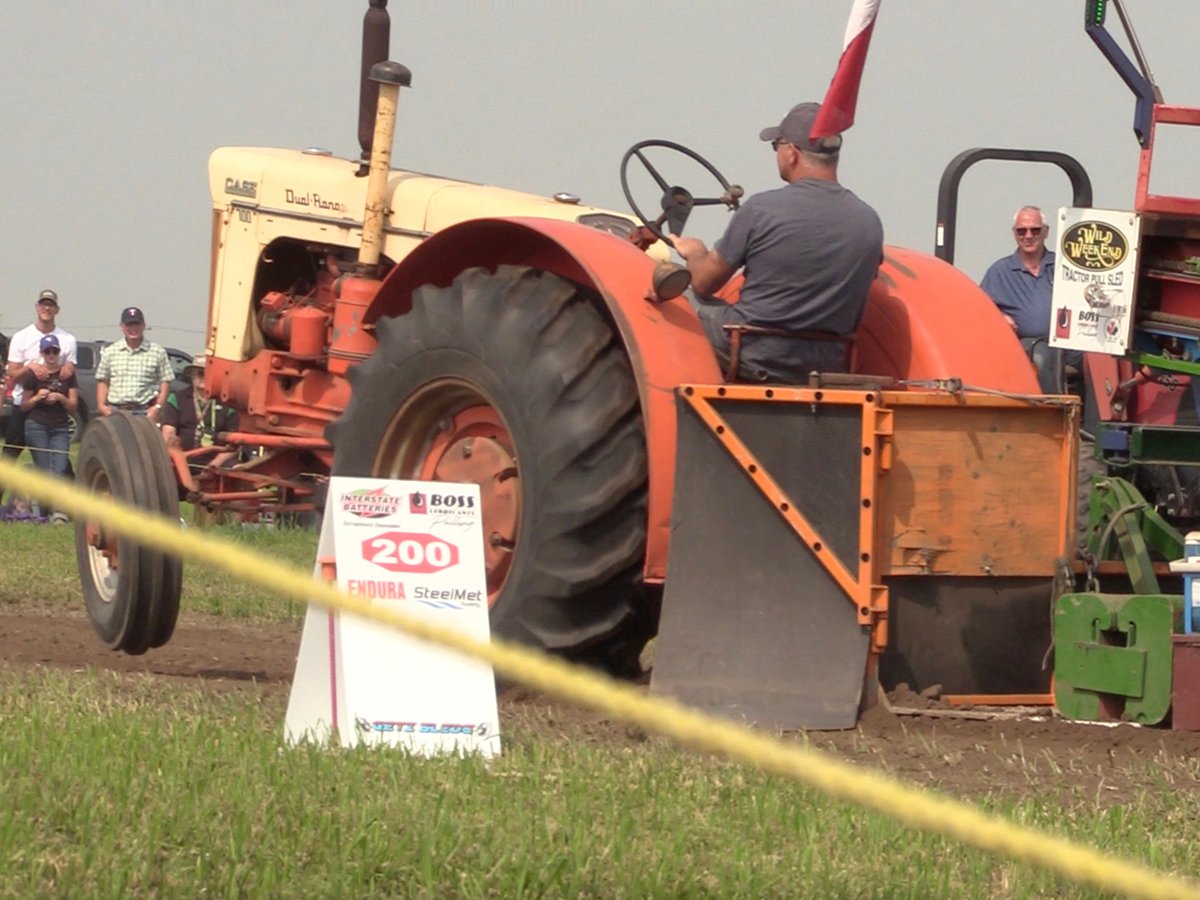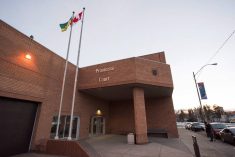Ted Cooper has had an idea in his head for 16 years that needs a champion, and preferably one with money.
The industrial designer from Saskatoon wants to change the way tourism is marketed in Saskatchewan.
Instead of the seasonal information centres at the provincial borders on the Yellowhead and Trans-Canada highways, he wants standardized places open all year round in the province’s towns and cities.
“A guy stops at the border and gets bags of literature,” Cooper said.
“By the time he gets to Saskatoon, he’s thrown the pamphlets away.”
Read Also

Vintage power on display at Saskatchewan tractor pull
At the Ag in Motion farm show held earlier this year near Langham, Sask., a vintage tractor pull event drew pretty significant crowds of show goers, who were mostly farmers.
The rural areas rarely see tourists because people aren’t reminded enough of sites off the highway, Cooper said.
The present system justifies Saskat-chewan’s reputation as the drive-through province, he added.
He proposes centres in major stopping points. Brochures in those centres would encourage people to try different driving loops that take them to rural Saskatchewan for a day of sightseeing.
For example, Cooper said, there are five driving loops from Saskatoon that could be featured in a brochure with maps and advertising: southwest to Lake Diefenbaker and its fishing, parks and beaches; east to the German ambiance of Humboldt; southeast to Watrous and the mineral spa and potash mines; north and northwest to cover the Riel rebellion, RCMP history, ferry rides across the North Saskatchewan River and various craft stores.
Cooper hopes tourists will be enticed to stop at these information centres by a recognizable logo reinforced by a standard-look centre that has a restaurant franchise on one side and crafts and tourism pamphlets on the other.
Cooper has designed a daisy loop logo, a brochure and a universal centre with an hourglass entryway and washrooms joining the two pods.
Cooper said he has talked to many people about his idea over the years.
Lately he has lobbied former member of Parliament Morris Bodnar, provincial highways minister Pat Atkinson, Tourism Saskatoon and officials from the city, the federal heritage department and Federated Co-operatives Ltd.
Money problems
The City of Saskatoon told him he would need $350,000 to buy land on which to locate a tourist centre, which, according to his design, would cost another $65,000 to get running. He tried Tourism Saskatchewan, but said he received no feedback.
“I make a lot of presentations but then there’s a big void,” he said.
“It generates enthusiasm but it frustrates me because they look at me as if I’ve got the money.”
Cooper has been told to adapt his centre idea to rural towns where land is cheaper and people might see more direct benefit to tour-ism. However, his universal design won’t work if people aren’t directed off the highways.
The closest Cooper’s idea came to solid reality was in 1996 in Montana. State officials representing tourism, highways, economic development and the governor all liked it and were pushing the concept until Cooper was asked to supply a business plan that would cost $20,000. That was the end of that, he said.
Sinclair Harrison, president of the Saskatchewan Association of Rural Municipalities, said similar driving loop ideas have been proven to work in other parts of Canada.
His own tourism region prints place mat maps for restaurants outlining attractions of the area. But getting money to develop a provincial system is difficult.
Harrison sees another problem with directing visitors to rural Sask-atchewan.
“Tourists aren’t prepared to haul their campers or motor homes over rough roads.”
Tourist centres
Tourism Saskatchewan operates five visitor reception centres at border entry points near Langenburg, Fleming, North Portal, Maple Creek and Lloydminster.
In a 1996 survey at these centres, Tourism Saskatchewan found slightly more than 40 percent of visitors said they were somewhat more likely to visit or do something in the pro-vince because of the information they received at the centre.
Another 26 percent said they are extremely or very likely to do something in Saskatchewan that they had not already planned to do because of the centre’s information.
Tourism Saskatchewan spokesperson Kate Blau said border centres are easier to find than if they were within a city.
Also, since tourists tend to travel with trailers or large recreational vehicles that need a lot of space to manoeuvre, a city location would likely cause these visitors to pass by without stopping.
She said visitors expect an information site that is provincial in scope at major border crossings into the province.
















